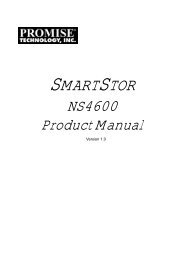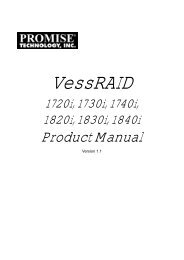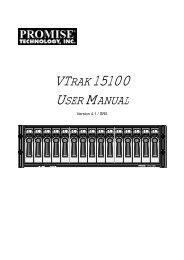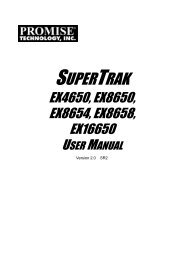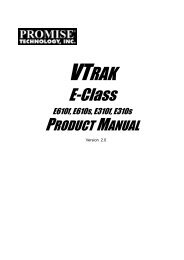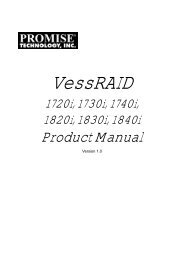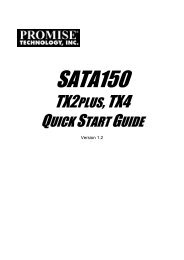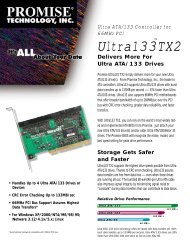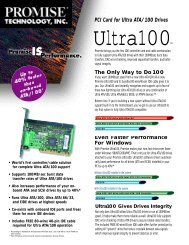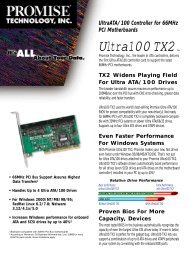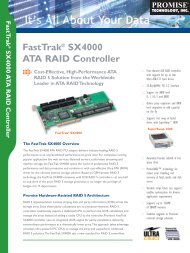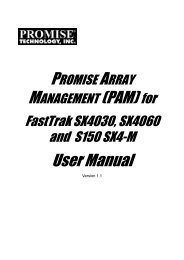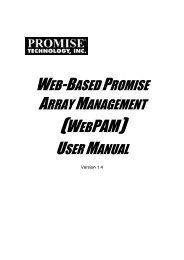WebPAM User v1.5 - Promise Technology, Inc.
WebPAM User v1.5 - Promise Technology, Inc.
WebPAM User v1.5 - Promise Technology, Inc.
Create successful ePaper yourself
Turn your PDF publications into a flip-book with our unique Google optimized e-Paper software.
Cache Settings<br />
99<br />
Chapter 6: <strong>Technology</strong> Background<br />
There is a data cache on the FastTrak controller and another one on each<br />
physical disk drive. A cache holds data in volatile memory during RAID<br />
management and data transfer activity. The right combination of cache settings<br />
for your needs can improve FastTrak’s efficiency and performance.<br />
Physical Drive Write Cache – Activates the write cache on the disk drive.<br />
Write Back Cache – Activates write-back feature of FastTrak’s controller cache.<br />
A write back cache holds data after an I/O operation and tells the controller the<br />
data has been written. The data is written as soon as the disk drive is no longer<br />
busy.<br />
This action increases availability of the logical drive. If the power fails before the<br />
data is written to the disk drive, the data will be lost.<br />
The alternative is a write-through cache policy, which reports that the data has<br />
been written to the disk only when it actually has.<br />
To make Cache settings, see “Create a Logical Drive” on page 62 and “Logical<br />
Drive Settings” on page 68.<br />
Migration and Expansion<br />
Migration is the process of changing the RAID level of an existing logical drive.<br />
Expansion is the process of adding more physical drives to a logical drive while<br />
keeping the same RAID level. See “Logical Drive Migration and Expansion” on<br />
page 69 for instructions how to migrate or expand a logical drive.<br />
Migration and Expansion are not available for JBOD.<br />
The Migration feature applies to certain combinations of RAID level and number<br />
of physical drives, as described in the table below.<br />
From To Result<br />
RAID 0: 1 or 2 drives RAID 5: 3 or 4 drives <strong>Inc</strong>reased performance<br />
RAID 10: 4 drives<br />
and capacity, adds<br />
redundancy<br />
RAID 0: 3 drives RAID 5: 4 drives <strong>Inc</strong>reased performance<br />
and capacity, adds<br />
redundancy<br />
RAID 1: 2 drives RAID 5: 3 or 4 drives <strong>Inc</strong>reased performance<br />
RAID 10: 4 drives<br />
and capacity<br />
RAID 10: 4 drives RAID 5: 4 drives <strong>Inc</strong>reased capacity



